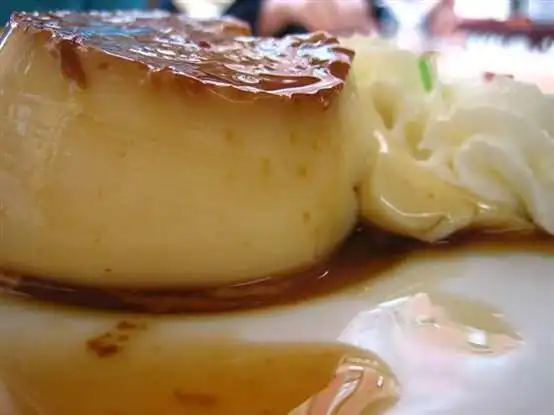Embark on a culinary journey to the heart of Honduras, where simplicity meets sweetness in a beloved dish—Tajadas. This traditional Honduran treat showcases the natural goodness of ripe plantains, elevated with a touch of caramelization and a sprinkle of cinnamon. Join us as we unravel the recipe for Tajadas, exploring the few but essential ingredients and the meticulous preparation that transforms humble plantains into a delightful symphony of flavors.
Understanding Tajadas: A Culinary Ode to Plantains:
Tajadas are more than a snack; they are a celebration of Honduras’s tropical bounty and culinary heritage. Originating from the abundance of plantains in Central America, Tajadas represent the art of transforming this versatile fruit into a deliciously sweet and satisfying treat. Whether enjoyed as a side dish, a snack, or a delightful dessert, Tajadas capture the essence of Honduran simplicity and the irresistible allure of caramelized plantains.
Ingredients for Honduran Tajadas:
The charm of Tajadas lies in the simplicity of its ingredients. Let’s explore the key components that contribute to the irresistible sweetness and caramelization of this Honduran delight.
Ripe Plantains: 3 to 4, peeled and sliced. Choose plantains that are fully ripe with blackened skins for optimal sweetness.
Vegetable Oil: For frying. Use a neutral-flavored oil such as vegetable oil for a clean taste.
Cinnamon Sugar Mixture: Optional. A blend of ground cinnamon and sugar for sprinkling over the fried plantains.
Preparation: Crafting the Perfect Honduran Tajadas:
Creating the perfect Tajadas involves a delicate balance of ripeness, frying, and a touch of sweetness. Let’s embark on the step-by-step journey to craft this Honduran culinary gem.
Step 1: Selecting Ripe Plantains:
Choose Fully Ripe Plantains: Opt for plantains with fully blackened skins. The blackening indicates ripeness and sweetness, essential for the caramelization process.
Peel and Slice: Peel the ripe plantains and slice them diagonally into thin, elongated pieces. The diagonal cut provides an ideal shape for even frying.
Step 2: Frying Tajadas:
Heat Vegetable Oil: In a deep skillet or frying pan, heat enough vegetable oil for frying. The oil should be hot but not smoking.
Fry Plantains in Batches: Carefully place the sliced plantains into the hot oil in batches, ensuring they have enough space to cook evenly. Fry until golden brown and caramelized on both sides.
Drain Excess Oil: Once fried, use a slotted spoon to transfer the Tajadas to a plate lined with paper towels. This helps drain excess oil.
Step 3: Optional Cinnamon Sugar Coating:
Prepare Cinnamon Sugar Mixture: In a small bowl, mix ground cinnamon and sugar to create a sweet and aromatic coating.
Sprinkle Cinnamon Sugar: While the Tajadas are still warm, sprinkle the cinnamon sugar mixture over them. The residual heat will help the sugar adhere to the plantains.
Step 4: Serve and Enjoy:
Arrange on a Plate: Arrange the Tajadas on a serving plate, showcasing their golden brown hue and caramelized edges.
Serve Warm: Tajadas are best enjoyed warm, allowing the caramelization to shine and the natural sweetness of the plantains to unfold.
Tips for Perfect Honduran Tajadas:
Choosing Ripe Plantains:
- Fully Blackened Skins: Opt for plantains with fully blackened skins for maximum sweetness.
Uniform Slicing:
- Diagonal Cut: Slice the plantains diagonally for a consistent shape and even frying.
Optimal Frying Temperature:
- Hot but Not Smoking: Ensure the oil is hot enough for frying, but avoid smoking, which can result in burnt Tajadas.
Even Frying:
- Batches for Consistency: Fry the plantains in batches, allowing for even cooking and caramelization.
Draining Excess Oil:
- Paper Towels: Place the fried Tajadas on paper towels to drain excess oil, maintaining a light and crisp texture.
Cinnamon Sugar Coating (Optional):
- Sprinkle While Warm: If using a cinnamon sugar mixture, sprinkle it over the Tajadas while they are still warm for better adherence.
Conclusion: Savoring Honduras with Tajadas:
In conclusion, Tajadas invite you to savor the sweet simplicity and tropical goodness of Honduran cuisine. From the ripe plantains to the golden caramelization, each bite is a celebration of the country’s natural bounty.
As you embark on your own culinary adventure to create Tajadas, relish in the simplicity of the ingredients, the art of frying, and the joy of sprinkling a touch of cinnamon sugar. Whether enjoyed as a snack, a side dish, or a delightful dessert, Tajadas bring the spirit of Honduras to your table. So, gather your ingredients, immerse yourself in the delightful experience of crafting and savoring Tajadas—one that captures the essence of Honduran culinary excellence.
















